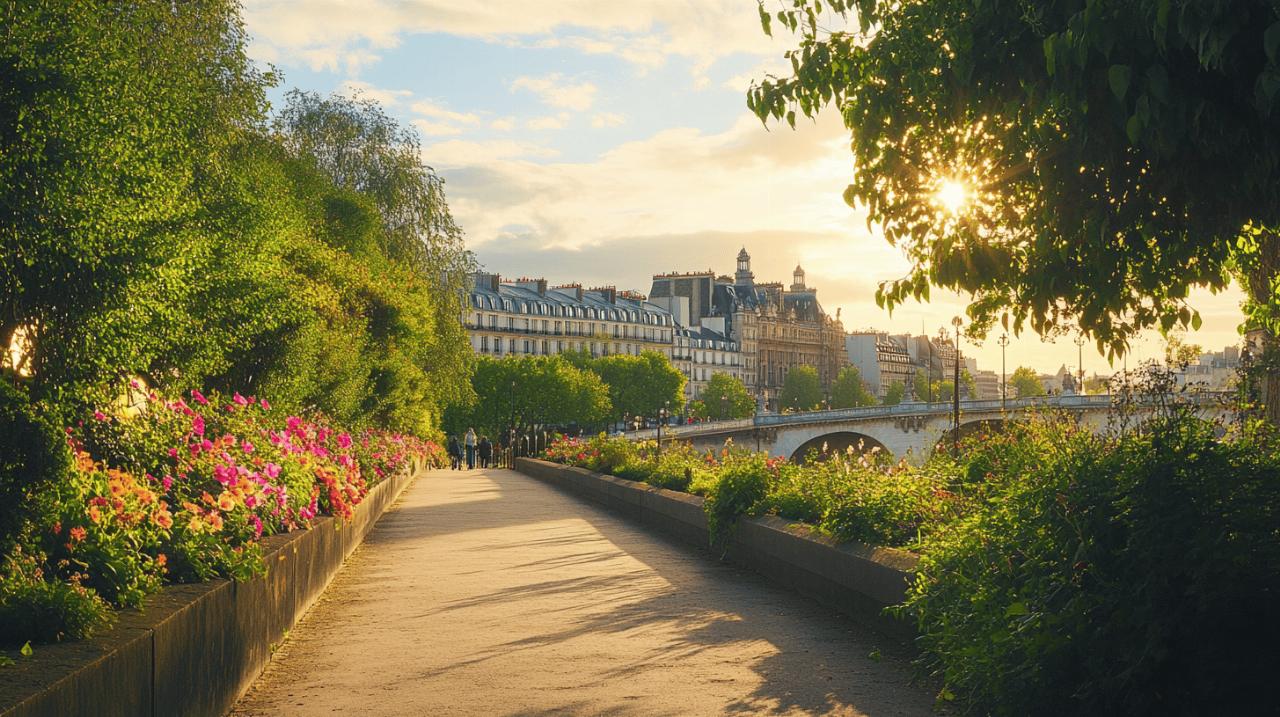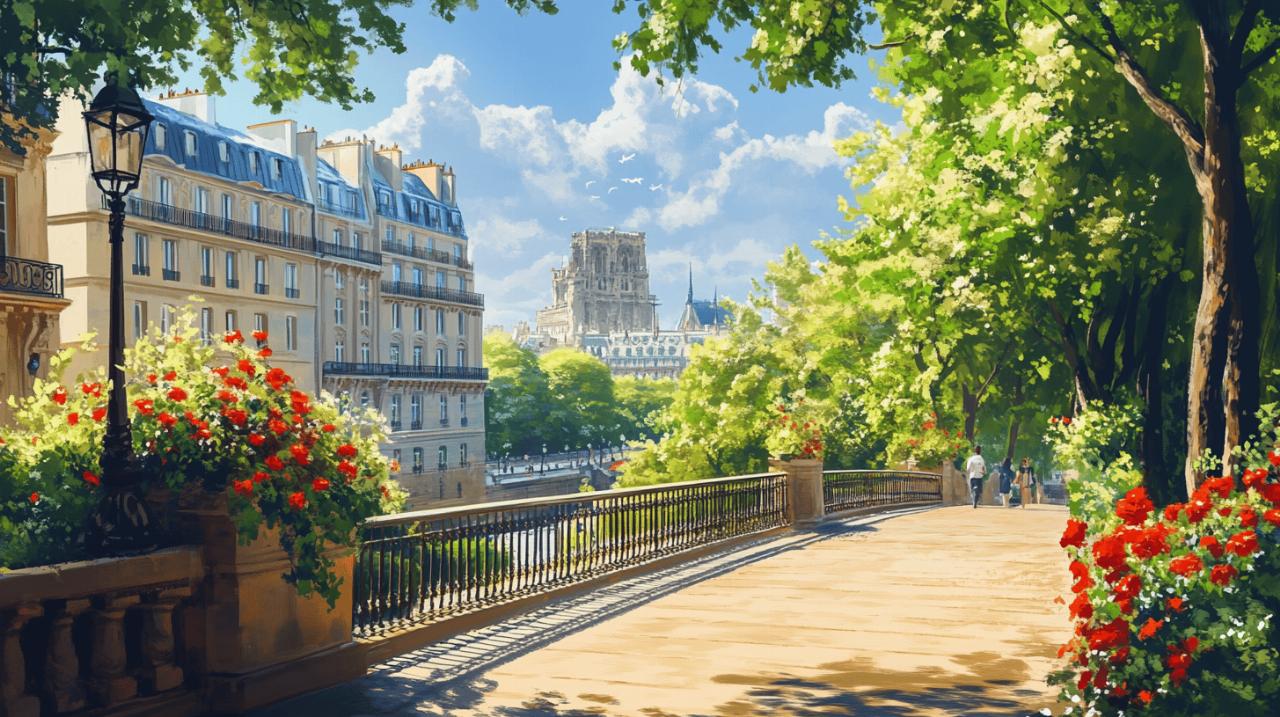Walking Through History: Exploring the Legacy of the Promenade Plantee a Paris
Nestled in the heart of the 12th arrondissement, the Promenade Plantée stands as a testament to Parisian innovation and urban renewal. This elevated walkway, officially known as the Coulée verte René-Dumont, offers visitors a unique perspective of the City of Light from up to ten metres above street level. Stretching approximately 4.7 kilometres from the bustling Opéra Bastille to the serene Bois de Vincennes, this green corridor has transformed an abandoned railway line into one of Paris's most beloved urban sanctuaries.
The origins of promenade plantée
Transformation from Ligne de Vincennes
The story of the Promenade Plantée begins with the Vincennes line, a railway that first connected Paris to its eastern suburbs in 1859. For over a century, trains rumbled along these tracks, serving as a vital transportation link until operations ceased in 1969. The line fell into disuse, becoming an urban scar through the 12th arrondissement. However, what might have remained a neglected railway wasteland was given new life when visionary urban planners saw the potential for transformation. A bold project commenced in 1988 to convert this industrial relic into a verdant pathway, culminating in the official opening of the Promenade Plantée in 1993.
The pioneering elevated park concept
The Promenade Plantée holds the distinction of being the first elevated urban park in the world, predating the famous New York High Line by nearly two decades. This innovative approach to urban green space utilisation has since inspired similar projects globally. In 2013, the walkway was renamed Coulée Verte René-Dumont in honour of a prominent French environmentalist, reflecting its significance in the ecological landscape of Paris. The success of this pioneering concept demonstrated how defunct industrial infrastructure could be reimagined as public spaces that enhance urban living and connectivity, establishing a model that cities worldwide have sought to emulate.
Architectural marvels along the route
The viaduc des arts renaissance
At the western section of the Promenade Plantée lies one of its most remarkable features, the Viaduc des Arts. This impressive structure consists of 45 restored brick archways that once supported the railway track. Today, these vaulted spaces house an array of artisan workshops, galleries, and design studios, creating a thriving cultural corridor beneath the elevated walkway. Craftspeople specialising in textiles, furniture restoration, glasswork, and other traditional arts have established themselves in these unique spaces, forming a vibrant community that celebrates French craftsmanship. The transformation of these industrial arches into creative hubs represents a seamless blend of heritage preservation and contemporary cultural development.
Unique urban perspectives from above
Walking along the Promenade Plantée offers an extraordinary vantage point of Parisian life that few other locations can match. Elevated up to ten metres above street level, the walkway provides intimate glimpses into the architectural details of Haussmannian buildings that would otherwise go unnoticed from ground level. Visitors can observe ornate balconies, decorative mouldings, and hidden rooftop gardens while simultaneously enjoying sweeping views across the cityscape. This elevated perspective creates a sense of peaceful detachment from the urban hustle below while remaining thoroughly immersed in the Parisian environment, allowing walkers to experience the city in a completely new dimension.
Green havens and hidden treasures
The serene jardin de reuilly
Approximately midway along the Promenade Plantée, the pathway opens onto the Jardin de Reuilly, an expansive green space that serves as a tranquil oasis within the walkway. This garden features meticulously landscaped areas with seasonal plantings, water features, and comfortable seating areas where visitors can pause and rest. The garden exemplifies the thoughtful integration of the promenade into the existing urban fabric, creating moments of spatial expansion that contrast with the linear nature of the walkway. Local residents frequently gather here for picnics, reading, or simply to enjoy the carefully cultivated flora that changes character throughout the seasons, making each visit a unique experience.
Discovering square charles péguy
Among the lesser-known gems along the Promenade Plantée is Square Charles Péguy, where the elevated walkway intersects with another piece of Parisian railway history, La Petite Ceinture. This circular railway encircled Paris from 1862 until 1934, predating even the Paris Metro system. The square offers a fascinating glimpse into the layered transportation history of the city, with remnants of both railway lines visible. Lush vegetation now softens these industrial elements, creating a contemplative space named after the French poet and essayist. The intersection of these two converted railways represents a physical manifestation of how Paris has continuously reinvented its infrastructure to meet changing urban needs.
Beyond the promenade
Connecting with Bois de Vincennes
The eastern terminus of the Promenade Plantée leads walkers to the magnificent Bois de Vincennes, one of Paris's largest public parks covering nearly 1000 hectares. This former royal hunting ground provides a natural continuation of the green journey begun on the elevated walkway. The transition from the structured linear path of the promenade to the expansive woodland creates a satisfying progression from urban to natural environment. Visitors can extend their exploration into the woods, discovering lakes, botanical gardens, and even a medieval castle. The thoughtful connection between these two green spaces allows Parisians to experience a complete nature journey without leaving the city limits.
The cultural impact on parisian life
Since its opening, the Promenade Plantée has profoundly influenced how Parisians interact with their city. Beyond serving as merely a pleasant walkway, it has become an integral part of local lifestyle, encouraging active transportation and providing a space for community connection. The promenade aligns with Paris's ambitious environmental goals, which include planting 170,000 trees by 2026 and ensuring that half of the city is covered in planted areas by 2030. This green corridor demonstrates how repurposed infrastructure can contribute to both cultural heritage and environmental sustainability. As Paris continues to evolve, the legacy of the Promenade Plantée as a blueprint for urban regeneration remains stronger than ever, inspiring future generations to reimagine the potential of neglected spaces.
The walking experience through the seasons
The Promenade Plantée, or Coulée Verte René-Dumont as it's officially known, offers visitors a unique perspective of Paris throughout the changing seasons. This pioneering elevated urban park, which opened in 1993, stretches approximately 4.5 kilometres from Opéra Bastille to the Bois de Vincennes through the 12th arrondissement. Built upon the former Vincennes railway line that operated from 1859 until its closure in 1969, this green pathway sits up to 10 metres above street level, providing a refreshing escape from the busy streets below.
The walking path meanders through various landscapes, beginning at the Viaduc des Arts near Bastille, where 45 restored brick archways now house artisan shops and galleries. As you continue eastward, the route intersects with remnants of La Petite Ceinture at Square Charles Péguy, another historical railway that operated from 1862 to 1934. This remarkable transformation from industrial infrastructure to verdant parkland served as inspiration for similar projects worldwide, most notably the New York High Line.
Spring and Summer Blooms Along the Path
During spring and summer, the Promenade Plantée truly lives up to its name as a 'planted walk.' The pathway bursts into life with vibrant flora creating a lush green corridor above the city. Rose bushes unfurl their fragrant blooms alongside carefully maintained flowerbeds that showcase seasonal plants. Cherry trees that line portions of the walkway create a spectacular display when in bloom, drawing photographers and nature enthusiasts alike.
The elevated position of the walkway allows visitors to catch cooling breezes during Paris's warm summer months whilst providing unique vantage points of the surrounding architecture. Local Parisians can be spotted relaxing on benches placed strategically along the route, reading books or simply enjoying the natural surroundings. The outdoor gym areas become particularly popular during these warmer months, as fitness enthusiasts take advantage of exercising in the fresh air with panoramic views of the 12th arrondissement.
Autumn and Winter Charm on the Elevated Walkway
As autumn arrives, the Promenade Plantée transforms into a tapestry of russet, gold and amber. The tree-lined sections create a spectacular canopy of colour as leaves change and gradually carpet the walkway. The cooler temperatures make for particularly pleasant walking conditions, and the shifting light casts beautiful shadows across the path throughout the day.
Winter brings its own distinct charm to this elevated urban park. When occasional snow dusts the Promenade, it creates a tranquil winter wonderland high above the streets of Paris. The bare branches of trees reveal architectural details of surrounding buildings previously hidden by foliage. Whilst visitor numbers naturally decrease during colder months, this makes for a more peaceful experience, with the opportunity to appreciate subtle details like the contrasting textures of the historic railway infrastructure against modern additions. Even in winter, the pathway offers a welcome respite from city streets, providing a unique perspective of Paris under grey skies or winter sunshine.
